Château Dereszla Eszencia 25 cl.
 I.G. Tokaj-Hegyalja, Tokaj-Hegyalja, Hungary.
I.G. Tokaj-Hegyalja, Tokaj-Hegyalja, Hungary.![]() Furmint and Hárslevelü.
Furmint and Hárslevelü.![]() Sweet wine Small Bottle, 25 cl.
Sweet wine Small Bottle, 25 cl.
 EUR, Final price!
EUR, Final price! Receive it
Receive it  February Friday 14 - Monday 17
February Friday 14 - Monday 17 FREE SHIPPING!
FREE SHIPPING!| Producer | Château Dereszla. |
| Name | Eszencia. |
| Variety |
|
| Country of origin |
 Hungary. Hungary.
|
| Region of origin |
 Tokaj-Hegyalja. Tokaj-Hegyalja.
|
| Appellation of origin |
 I.G. Tokaj-Hegyalja. I.G. Tokaj-Hegyalja.
|
| (UE)401/2010 Certification |
Indicación Geográfica (I.G.) Indicación de Procedencia (I.P.) I.G. Tokaj-Hegyalja. |
| Weight | 500 gr. |
| Typology |
Sweet wine. I.G. Tokaj-Hegyalja. |
| Variety |
|
| Vintage / Harvest |
Currently marketed by the producer.
|
| Format | Small Bottle. |
| Capacity | 25 cl. |
| Alcohol content | 5% Vol. |
| Weight | 500 gr. |
| Special Format | Medium Bottle. |
| Product reference | WAN4552832 |
| Actual price | 392,95 € |
| Minimum order quantity | 1 Unit. |
| Shipping deadline |
 Spain: Free Shipping. Spain: Free Shipping. Delivery term: Information and prices. |
| Storage position | Lateral position, horizontal bottle. |
| Storage temperature |
Store at a constant temperature between 10-17ºC. Humidity should be constant around 60-80%. |
| Recommendations | Keep preferably away from light. |
|
PLEASE NOTE: Our team is currently working on the translation of this information. You can check all these details in your language in the coming days. For additional and accurate information, please refer to the original version of this content. Our team provides this information and details in Español language. In case of doubt, misunderstanding or misreading about the content of this information you should refer to the original version of this page or contact our customer service team.  Español [ ES ] Español [ ES ]Envejecido, con sus lías finas, en barricas de roble francés.
|
|
| Visual tasting note | Purple shades, Intense amber color, Iodized tone, Mahogany tones. |
| Olfactory tasting note | Raspberry, Peach, Toasted notes. |
| Tasting note | Complex, Refined, Toffee, Slightly bitter. |
| Recommended pairing | Fresh fruits, duck with orange, Not very sweet desserts. |
| Consumption temperature | 9ºC - 11ºC. |
| Consumption | It is recommended to drink in moderation and demonstrate a responsible consumption of alcoholic beverages. |
| Please keep in mind |
The information provided and referred to the product features and details has been provided by the expert, manufacturer or producer or published on the official sites. In no case can it be considered as assessment made by our team, unless expressly stated otherwise. We suggest you to refer to the comments and reviews posted by our customers and users to expand and contrast this information. |
| Misreading |
Our team provides this information and details in ESPAÑOL language. If you browse in another language note that the information contained may have been translated from the original language through an automated real-time process that has not been supervised by our human team. In case of doubt, misunderstanding or misreading about the content of this information you should refer to the original version of this page or contact our customer service team. |
| Product image |
The product image or its label is only relevant for graphic purposes, so it may not match the identification of the vintage or other features and details of the product for sale. This product is provided in the conditions and format in which it is marketed at the current time. This product is not identified or supplied in a specific vintage. The product image and label may not match the vintage identification or other characteristics and details of the product for sale. |
| Legal Notice |
It is against the law to sell or supply alcohol to, or to obtain alcohol on behalf of a person under the age of 18 years. If you are not more than 18 years old, you must leave this website. |
Selection by «Message in a Bottle®»
Red Wine. Premium Edition MBS Reserva. Customizable label.
No customer reviews at this time. Be the first to post a review!
Product Selection by Château Dereszla.
17 Products, The best selection by Château Dereszla.
Château Dereszla Eszencia 25 cl.
Additional information.

|
«Château Dereszla Eszencia Tokaj-Hegyalja» is produced by Château Dereszla. In the elaboration of «Château Dereszla Eszencia Tokaj-Hegyalja» the grape varieties that are used are Furmint and Hárslevelü. «Château Dereszla Eszencia Tokaj-Hegyalja» is a product from Hungary. The production region of «Château Dereszla Eszencia Tokaj-Hegyalja» is Tokaj-Hegyalja. It is certified with I.G. Tokaj-Hegyalja. The weight of «Château Dereszla Eszencia Tokaj-Hegyalja» is 500 grams. |
Appellation of origin:
I.G. Tokaj-Hegyalja.
Château Dereszla Eszencia 25 cl.
 Español [ ES ]
Español [ ES ]Breve historia.
El norte de Hungría esconde auténticas joyas enológicas en sus laberínticas bodegas. Su rey es el tokaj, que conquista el paladar de quienes lo descubren. Ningún otro vino ha sido halagado por tantos reyes, papas, poetas y espías. La región vinícola de Tokaj, que ocupa 5.500 hectáreas del actual nordeste húngaro, fue la primera zona del mundo establecida como distrito cerrado con denominación de origen, como así lo certifica un decreto real rubricado en el año 1757. Este relevante dato nos da la medida de que nos referimos a un área de producción vinícola con una historia única y singular, de tal importancia que fue declarada Patrimonio de la Humanidad por la UNESCO en 2002. Sin embargo, este privilegiado territorio para la elaboración de vinos estuvo condicionado a unas normas politizadas que lo llevaron al olvido durante años... concretamente, todos los comprendidos durante el período de dominación soviética. Cuando aconteció el descalabro del régimen comunista, hace más de dos décadas, y se celebraron las primeras elecciones libres en el país a principios de los años noventa del pasado siglo, Hungría se liberó de aquella manera de entender no solo la organización estatal, ¡sino también el vino!. Desde aquel momento los viticultores retomaron la tradición de elaborar “el vino de los reyes”, aquel néctar dorado, especial, dulce y seco a la vez, que otrora hizo las delicias de los banquetes y festejos más exclusivos de la burguesía europea del siglo XIX. Con la llegada de inversores extranjeros como el Grupo AXA (Union des Grands Crus de Tokaj), con reputadas bodegas en Francia; de la Quinta do Noval de Oporto, o de las bodegas españolas Vega Sicilia, se creó, en 1995, la asociación denominada Tokaji Renaissance, con el objetivo de elaborar el auténtico y legendario vino de Tokaj. Apostaron por la tecnología, que activó la producción y la calidad de los vinos; y realizaron considerables mejoras en los viñedos, el equipamiento y el control higiénico.
La esencia Aszú.
La joya de la corona de estos vinos es la llamada Eszencia Aszú, que algunos tratados describen como el vino más valioso del mundo, aunque técnicamente no debiera llamarse vino puesto que su enorme concentración de azúcar significa que su nivel de alcohol no supera los 5º. Tiene mucho azúcar pero no es empalagoso a causa de su acidez, característica que lo hace uno de los bebibles más expresivos del mundo. Es un vino dulce que no aburre. Tiene más de seis puttonyos de uva botritizada y solamente se elabora con añadas excepcionales. A medida que aumenta el nivel de puttonyos, la cantidad de aszú, se dificulta más la fermentación, ya que las levaduras no pueden operar en altas concentraciones de azúcares. Su fermentación es lenta y dura varios años, y solo algunos cientos de botellas se reservan cíclicamente para diletantes gourmets. Se presenta en el mercado en botellas de 40 cl. que más que botellas de vino parecen frascos de botica; No en vano, en otros tiempos, se vendía en las farmacias como elixir reconstituyente recomendado para convalecientes de trastornos estomacales o pacientes que habían tenido problemas con su sistema nervioso. El exclusivo Eszencia Aszú, fue definido como el “vino de los reyes”, "vinum regum, rex vinorum: vino de reyes y rey de los vinos", en frase atribuida al rey Luis XIV de Francia. En tiempos imperiales los eszencias se mantenían en las bodegas 100 años antes de ser consumidos… y los reyes, como es de suponer, lo tomaban en cucharilla de plata.
Tipo de vides.
La región tiene una impresionante cantidad de vides diferentes, y produce desde vinos blancos secos hasta uno de los vinos más dulces del mundo; pero, actualmente, solo cuatro variedades de uva son permitidas para los vinos que llevan el nombre Tokaj: furmint, hárslevelü, sárgamuskotály y zéta. El origen de la furmint no está comprobado con certeza pero se coincide en que se trata de una variedad autóctona de la cuenca de los Cárpatos y está presente en Hungría desde el siglo XII. Ocupa el 70% del área cultivada y es de lejos la uva más importante en la producción de los vinos dulces. Posee una fina piel muy susceptible a la botritis. Gracias a sus altos niveles de acidez y a su potencial aromático, la furmint es una uva perfecta para elaborar vinos dulces cuando se ve afectada por “podredumbre noble”, que incrementa la cantidad de azúcar del grano de forma notable. Además, los vinos elaborados con furmint también tienen una enorme capacidad de envejecimiento. Se la considera como una de las uvas más características de las blancas húngaras. Un vino furmint seco puede ser de color amarillo paja, pero también de intenso dorado. La variedad hárslevelü (en húngaro), también llamada lindenblättriger (en alemán) es una variedad de uva de la rama ponciano balcánica. La variedad es originaria también de la cuenca de los Cárpatos y ocupa el 25% de los viñedos húngaros. Es más aromática que la furmint y deja una acidez más suave. Se planta en muchas regiones del país magiar, pero predomina en la región vinícola de Somló. En la región de Tokaj, se mezcla con la furmint para producir Tokaj Aszú y otros vinos de postre. Procesada como varietal puro, la uva hárslevelü es capaz de producir un vino seco dorado y con cuerpo, con un intenso aroma a especias y flores de saúco. Como curiosidad, destacamos que la hárslevelü también se planta en Sudáfrica. Las vides de la variedad sárgamuskotály están consideradas como de las más viejas del mundo. Están presentes en Tokaj desde tiempos inmemoriales. Los vinos elaborados con esta uva tienen un bouquet parecido al moscatel amarillo. Son más apropiados para el aperitivo que para vinos de mesa. Del cruce entre la furmint y la bouvier surgió la uva zéta. Fue introducida en la región de Tokaj en 1951, aunque no se autorizó para la elaboración de vinos autóctonos hasta 1990. Anteriormente se la denominó oremus, nombre que ha seguido explotando la bodega española homónima establecida en Hungría desde 1993. La denominación de uva oremus cambió a zéta en 1999. También es una uva propicia para ser afectada por la botritis, por su particular aptitud para las altas concentraciones de azúcar. Como varietal independiente es muy neutral. Ocupa poco más del 1% del total de los pagos.
Historia del vino Tokaj Aszú.
Este vino dorado de calidad excelente se elabora a partir de las variedades furmint y hárslevelü. Su historia (en parte) es lo que caracteriza su fama mundial: El surgimiento del vino Tokaj Aszú está asociado con la figura de la condesa húngara Susana Lorántffy (1600 -1660). Susana era la esposa de Rákóczi I, Príncipe de Transilvania, y por consiguiente propietaria de vastos viñedos. Ella cuidaba personalmente de ellos y (piadosa como era) enseñó a muchos religiosos, como a Matías Szepsi Laczkó, los secretos de los cultivos. A mediados del siglo XVII, las continuas guerras contra los turcos provocaban el retraso de las vendimias con lo que las condiciones climáticas favorecían la podredumbre de las uvas y por consiguiente la aparición de un hongo parásito que afectaba a las vides. El hongo (botrytis cinerea) penetra en la uva, secándola y concentrando los azúcares. A resultas de esta pasificación accidental, se descubrió que mezclando las uvas botririzadas con mosto en fermentación se obtenía un vino muy glicérido e intenso, de aromas muy complejos: miel, membrillo, anís, flor de acacia, y sobre todo con un peculiar equilibrio entre la acidez y el dulzor que aportaban ese punto de majestuosidad, misterio y rareza difícil de encasillar. Cuentan las crónicas que el primer vino resultante de estas características fue servido en la Pascua de 1630 por el cura calvinista Matías Szepsi, al que se le atribuyen los honores de ser su creador. La elaboración del tokaj aszú, tal y como la definió Szepsi, se divide inicialmente en la extracción por separado de dos mostos diferentes. Uno de uvas normalmente maduras y otro de uvas botritizadas. Naturalmente no todo es tan fácil, ni tan poético, porque todavía hoy en día la recolección de las uvas es parte muy importante en la vendimia y los resultados varían de cosecha en cosecha. Los racimos afectados por la “podredumbre noble” se recogen a mano y cuidando que el fruto maduro (llamado aszú en húngaro) no se rompa, porque perdería las propiedades de su néctar.
La vinificación.
Las uvas aszú se amontonan en unos canastos de madera con capacidad para 25 kilos, llamados puttonyos, y dependiendo de los puttonyos –3, 4, 5 o 6– añadidos al mosto base definirá la mayor o menor concentración de azúcares en el producto final y dará la categoría al vino. Los vinos fermentarán durante 60 días en barriles de roble húngaro, proveniente de los robledales de los montes Zamplén, con capacidad para 136 litros (llamados gönc), para pasar después, no menos de tres años, al silencio húmedo de laberínticas cavas subterráneas a más de ocho metros de profundidad, donde el moho de las cuevas, llamado cladosporium cellae, que absorbe los vapores del alcohol, protegerá al vino de por vida, convirtiéndolo en un vino inmortal. De hecho los zares de la Rusia Imperial pudieron descubrir el sabor de botellas con 200 años de vida. En las profundidades de algunas bodegas todavía pueden verse botellas que tiene más de 100 años. Dicen algunos viticultores que si se ha sido previsor y periódicamente se han ido cambiando los tapones de corcho pueden ser bebibles durante siglos. Los Tokaj Aszú deben consumirse a una temperatura entre 11º y 13º C., a fin de poder percibir mejor sus aromas. Son excelentes aperitivos, maridan perfectamente con un buen foie gras, y potencian los sabores de platos como pavo con manzana o pato con albaricoque. Son adecuados néctares como vino de cierre para una gran ocasión.
Sweet wine I.G. Tokaj-Hegyalja
Product Selection Sweet wine I.G. Tokaj-Hegyalja.
Château Dereszla Eszencia 25 cl.

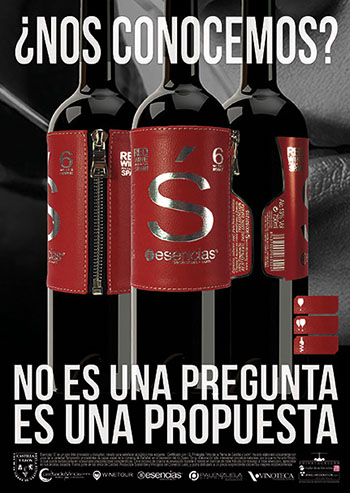
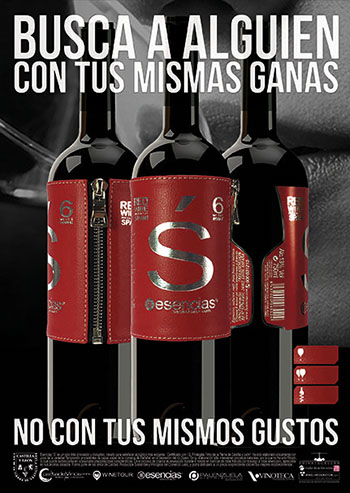
Data sheet.
Château Dereszla Eszencia 25 cl.
Sweet wine. Château Dereszla. Eszencia. I.G. Tokaj-Hegyalja. Tokaj-Hegyalja. Hungary. Furmint, Hárslevelü. Small Bottle. 25 cl..
| Variety | |
| Country of origin |  Hungary. Hungary. |
| Region of origin |  Tokaj-Hegyalja. Tokaj-Hegyalja. |
| Appellation of origin |  I.G. Tokaj-Hegyalja. I.G. Tokaj-Hegyalja. |
| Vintage / Harvest | Currently marketed by the producer. |
| Format | Small Bottle. |
| Capacity | 25 cl. |
| Alcohol content | 5% Vol. |
| Visual tasting note | Purple shades, Intense amber color, Iodized tone, Mahogany tones. |
| Olfactory tasting note | Raspberry, Peach, Toasted notes. |
| Tasting note | Complex, Refined, Toffee, Slightly bitter. |
| Recommended pairing | Fresh fruits, duck with orange, Not very sweet desserts. |
| Consumption temperature | 9ºC - 11ºC. |
| Special Format | Medium Bottle. |
| Typology | Sweet wine. I.G. Tokaj-Hegyalja. |
| Producer | Château Dereszla. |
| Name | Eszencia. |
| Weight | 500 gr. |
| Product reference | WAN4552832 |
| Actual price | 392,95 € |
| Minimum order quantity | 1 Unit. |
| Shipping deadline |  Spain: Free Shipping. Spain: Free Shipping. Delivery term: Information and prices. |
| Please keep in mind | The information provided and referred to the product features and details has been provided by the expert, manufacturer or producer or published on the official sites. In no case can it be considered as assessment made by our team, unless expressly stated otherwise. We suggest you to refer to the comments and reviews posted by our customers and users to expand and contrast this information. |
| Misreading | Our team provides this information and details in ESPAÑOL language. If you browse in another language note that the information contained may have been translated from the original language through an automated real-time process that has not been supervised by our human team. In case of doubt, misunderstanding or misreading about the content of this information you should refer to the original version of this page or contact our customer service team. |
| Product image | The product image or its label is only relevant for graphic purposes, so it may not match the identification of the vintage or other features and details of the product for sale. This product is provided in the conditions and format in which it is marketed at the current time. This product is not identified or supplied in a specific vintage. The product image and label may not match the vintage identification or other characteristics and details of the product for sale. |
| Description | PLEASE NOTE: Our team is currently working on the translation of this information. You can check all these details in your language in the coming days. For additional and accurate information, please refer to the original version of this content. Our team provides this information and details in Español language. In case of doubt, misunderstanding or misreading about the content of this information you should refer to the original version of this page or contact our customer service team.  Español [ ES ] Español [ ES ]Envejecido, con sus lías finas, en barricas de roble francés. |
| Country of origin | Spain. This product is shipped from Spain. |
| (UE)401/2010 Certification | Indicación Geográfica (I.G.) Indicación de Procedencia (I.P.) I.G. Tokaj-Hegyalja. |
| Storage position | Lateral position, horizontal bottle. |
| Storage temperature | Store at a constant temperature between 10-17ºC. Humidity should be constant around 60-80%. |
| Recommendations | Keep preferably away from light. |
| Accessories | This product is provided in the conditions and format in which it is marketed at the current time. In cases where the product includes an additional packaging, box and/or case, These accessories will be included in the shipment as long as they comply with the dimensions of the special packaging adapted and approved for the transport of beverages. In general, the images of the products that we publish on our website are only relevant for graphic purposes. The images do not show other accessories such as additional packaging (box, case, etc.) or promotional elements that may occasionally be included by the manufacturer along with the product. If you wish, we can inform you about the additional packaging, elements and accessories included with the product at the current time. |
| Legal Notice | It is against the law to sell or supply alcohol to, or to obtain alcohol on behalf of a person under the age of 18 years. If you are not more than 18 years old, you must leave this website. |
| Consumption | It is recommended to drink in moderation and demonstrate a responsible consumption of alcoholic beverages. |
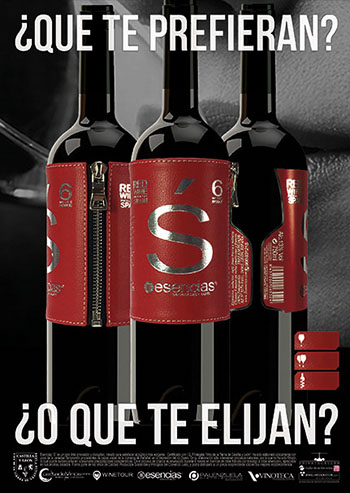
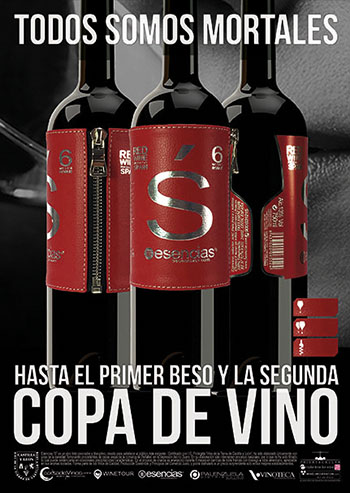
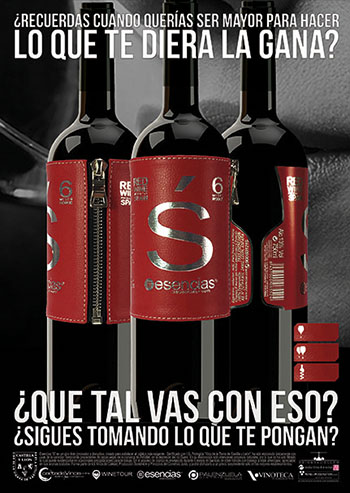
 Italy
Italy France
France Argentina
Argentina United States
United States Australia
Australia Portugal
Portugal Chile
Chile New Zealand
New Zealand South Africa
South Africa



 Germany
Germany Austria
Austria









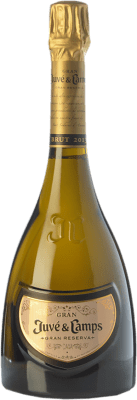


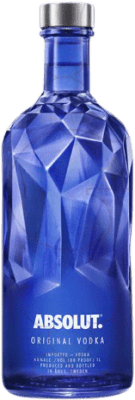






















 Language English
Language English





































